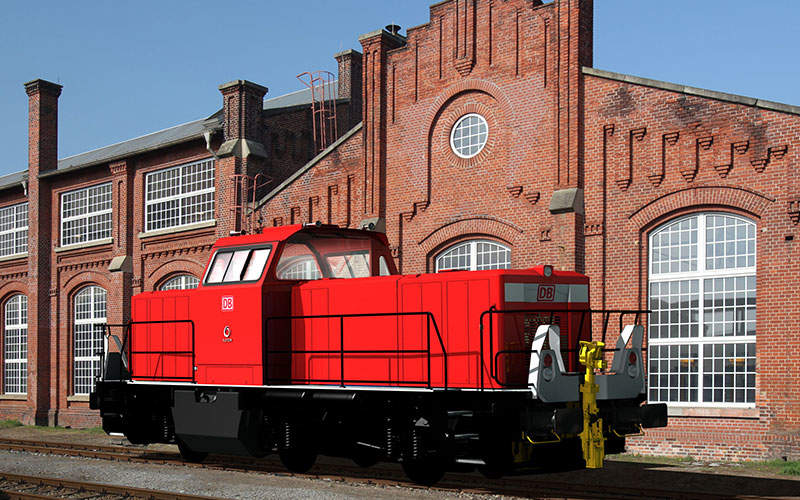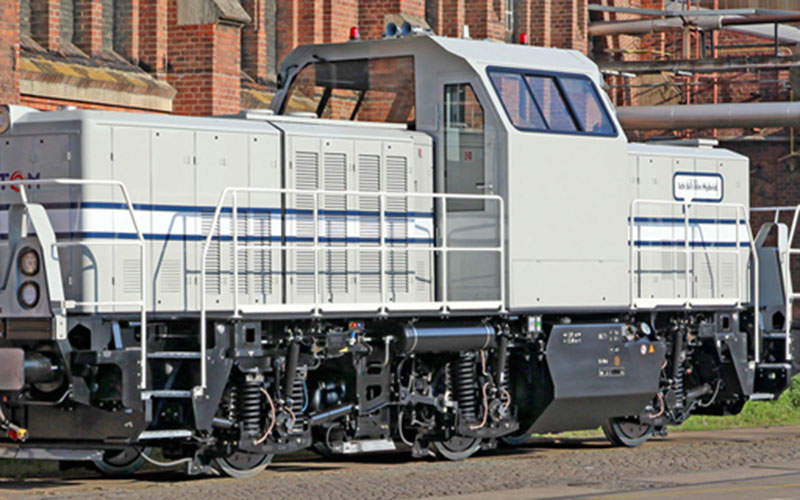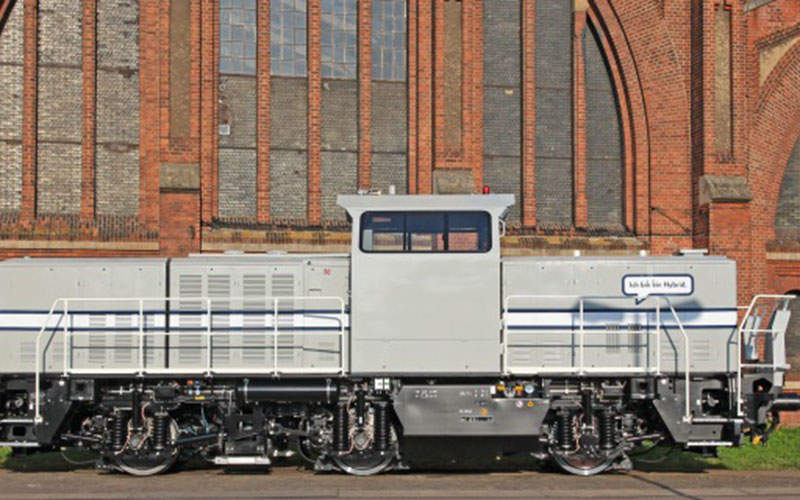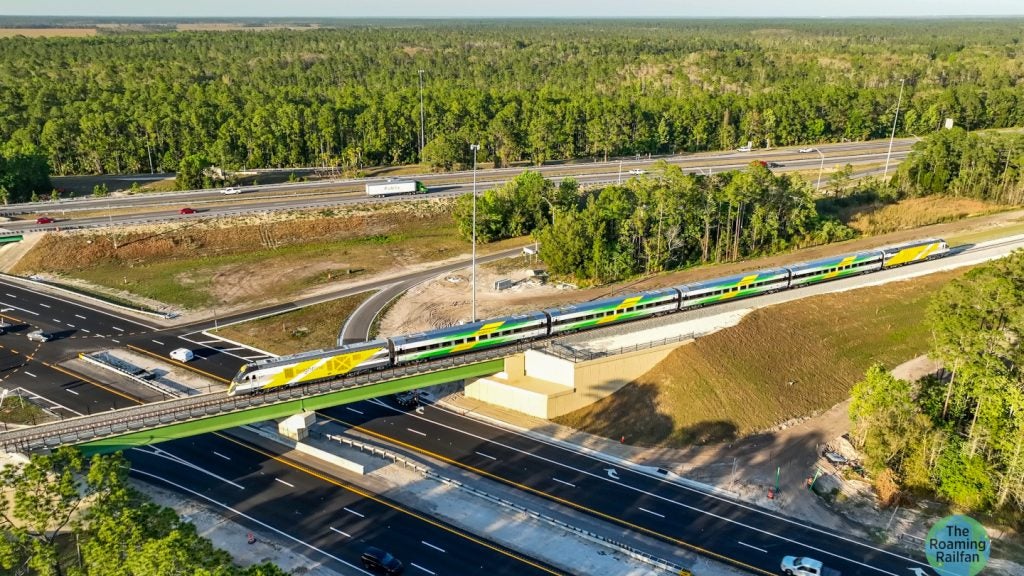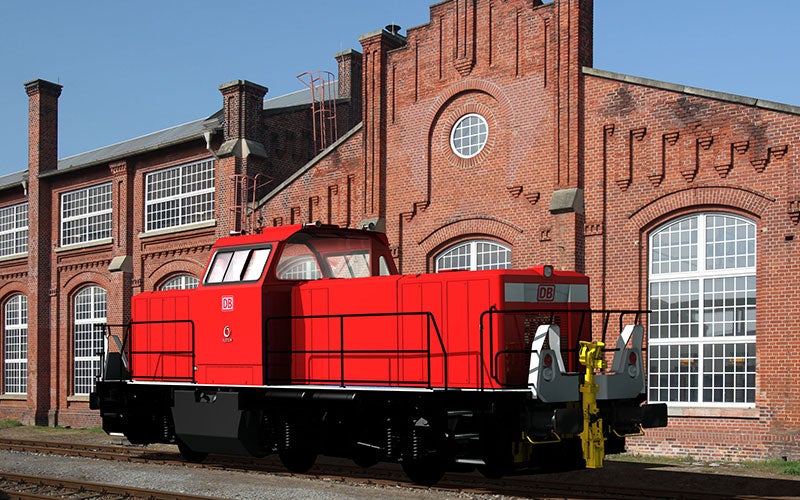
The H3 Hybrid Shunting Locomotive Project involves the development and testing of five new-generation locomotives based on hybrid technology (electric batteries and / or generators). The project is being developed by Deutsche Bahn (DB), Alstom Deutschland, the State of Bavaria and DAL Deutsche Anlagen-Leasing.
The project forms part of the Eco Rail Innovation (ERI) platform, which currently has 19 member companies. The ERI aims to create an emission-free rail system by 2050.
The H3 Hybrid locomotive project was initiated in August 2013, and the first locomotive was unveiled at InnoTrans 2014 in Berlin.
The five locomotives are now undergoing an eight-year test at DB’s sites in Würzburg and Nuremberg, Franconia. The project has been funded with €600,000 ($653,560 approximately) from the State of Bavaria.
The locomotives are being manufactured at Alstom’s Stendal site in Scaxony-Anhalt, Germany.
H3 Hybrid Shunting Locomotive design details
The H3 locomotive is 12.8m-long, 3.13m wide and 67t in weight. It has a maximum axle load of 22.5t, and is designed to operate for 40 years.
It can handle a minimum curve radius of 60m, integrates a flexicoil suspension system, and has a starting tractive effort of 240kN.
The locomotive can reach a maximum speed of 100km/h on a 1,435mm European standard gauge, allowing it to operate in short-distance mainline traffic.
H3 Locomotive variants
The three-axle locomotive is available in four variants: the H3 Battery 600kW electric locomotive, the H3 Hybrid 700kW hybrid locomotive, the H3 Dual Engine 700kW dual engine locomotive, and the H3 Single Engine 1,000kW single-engine locomotive.
The first variant runs on eight battery containers providing 600kW, the second is equipped with a 350kW generator and a 350kW battery, the third has two 350kW diesel generators, and the fourth variant features a 1,000kW diesel generator. The latter three variants are each equipped with a 2,000l fuel tank.
The first two variants are designed to perform shunting operations in sensitive industrial areas and tunnels. The third variant is designed for industrial sites and mainline services, and the fourth variant is designed for mainline services and heavy shunting operations.
Environmental benefits and safety features
The H3 hybrid locomotive consumes up to 50% less fuel, offsets pollutions by up to 70%, and enables noise reduction by more than 80% compared to conventional locomotives. The second variant can operate 50% to 75% solely on battery power.
The second and third variant’s 350kW diesel generators integrate particle filters and comply with the latest European exhaust gas emissions standard stage IIIB. While conventional traction locomotive generators consume approximately 20l of fuel an hour, the diesel generators can run on approximately 9l of fuel an hour.
The locomotive is fully compliant with the European crashworthiness standard EN 15227, and is fitted with Alstom’s Train Tracer solution, which enables constant monitoring of train data.
H3 hybrid shunting locomotive orders and deliveries
The project continues to attract industrial customers, with Alstom supplying one locomotive each to Volkswagen and Audi in 2015. Another Audi locomotive is scheduled for delivery in late-2016.
Audi and Volkswagen have deployed the supplied locomotives at their automobile manufacturing plants in Ingolstadt and Wolfsburg respectively.
Contractors involved
The hydraulic bogie coupling system for the locomotives were designed and supplied by Liebherr.

